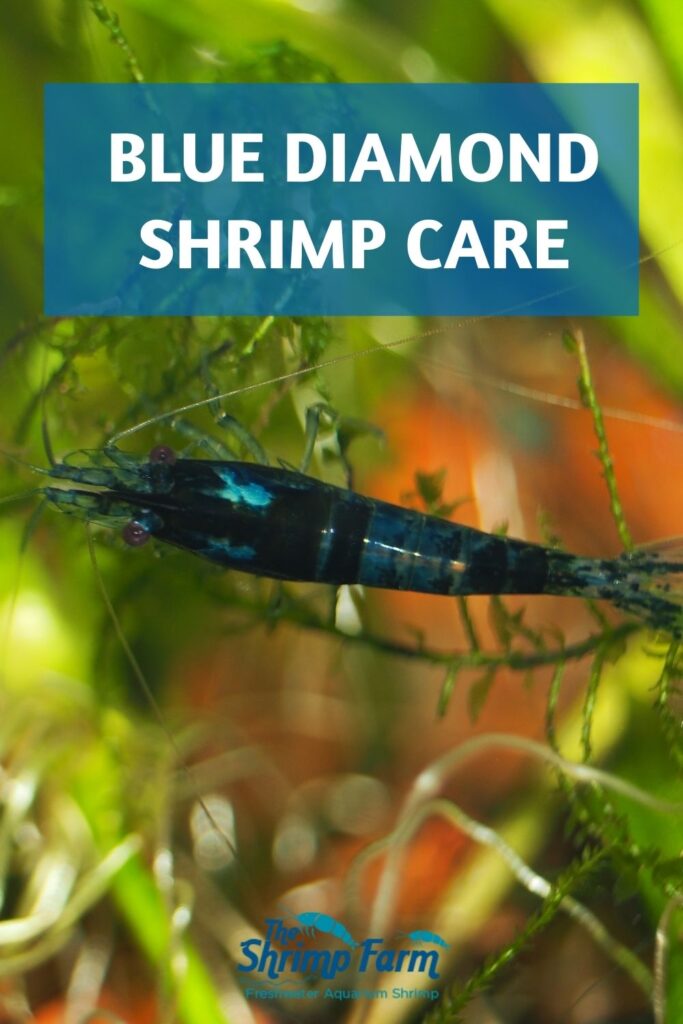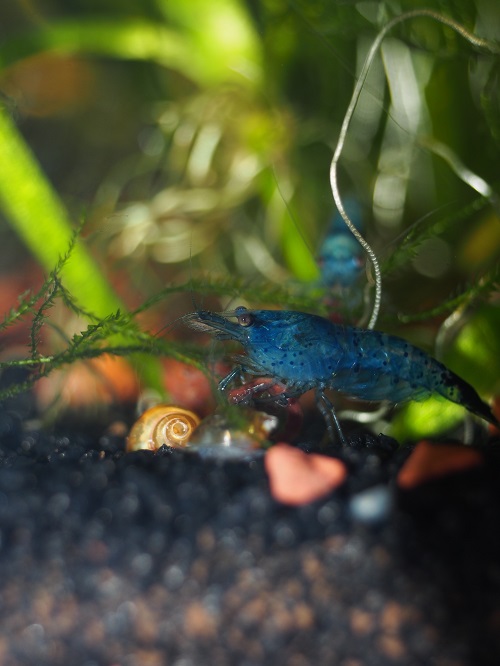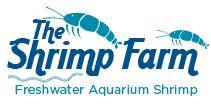Blue diamond shrimp | Neocaridina davidi var. 'Blue Diamond' care & info
Looking for a colorful shrimp to add to your aquarium but don't want a fussy species? Neocaridina davidi is the genus for you, and we've got a blue variety to introduce you to today! The blue diamond shrimp, Neocaridina davidi 'Blue Diamond', is appreciated for its opaque, deep blue color.
Keep reading for everything you need to know about blue diamond shrimp and keeping them in your home aquarium.
| Scientific name | Neocaridina davidi 'Blue Diamond' |
| Common name | Blue diamond shrimp, blue sapphire shrimp |
| Difficulty level | Easy |
| Origin | China |
Table of Contents
Blue diamond shrimp appearance
The blue diamond shrimp is a selectively bred variety of Neocaridina davidi, which is a dwarf shrimp species that's naturally greenish-brown but now exists in many different colors. In fact, there are multiple blue varieties. The blue diamond is characterized by its particularly dark, sapphire blue coloration. The eyes can be gold or dark.
Aside from blue diamonds, there are also blue jelly shrimp, blue velvet shrimp, blue dream shrimp and more. You can find them all in our list of blue aquarium shrimp!
Neocaridina davidi shrimp grow to a maximum size of around 1", with the females being larger.
Setting up a blue diamond shrimp aquarium
Requirements
The great thing about blue diamond shrimp and their other Neocaridina cousins is that they're not too fussy about their environment. You can keep a colony in an aquarium of 5 gallons or up as long as it has a filter and is fully cycled. A heater isn't usually necessary as these guys thrive at room temperature, but can be a handy addition if there is a risk of temperature swings.
In terms of décor, you're pretty much free to do whatever you like as long as the tank isn't too bare. Shrimp are prey animals after all, meaning they appreciate some hides. This especially applies when they're molting and feeling vulnerable. Live plants are a great choice as well. A black substrate is ideal to really make this variety's blue color pop.
Water parameters
Although Neocaridina shrimp don't tend to be too particular about water values and can be kept in tap water unless it's very low in quality, it is important to properly cycle the aquarium before introducing any livestock.
Use a liquid water test kit to ensure ammonia and nitrite values are at 0. Nitrates should be kept low (preferably <10) by means of weekly water changes.
pH: 6.2-8.0
Temperature: 65-85 °F
Hardness: 4-12
Total Dissolved Solids: 150-250
Tankmates
Dwarf shrimp are vulnerable prey animals and their babies especially are very small, meaning they're on almost all fish species' menus. Luckily, blue diamond shrimp and other Neos are very prolific, meaning that they usually produce enough offspring to offset a casualty here and there. That means you have a few fish options for tankmates given there are enough hiding places. Small tetras and the like may work, as will microfish like rasboras and dwarf Corydoras.
You can also keep your blue diamonds with other shrimp as long as they're not members of the same genus. Neocaridinas are often kept with dwarf Caridina species like crystal red shrimp, as the two don't interbreed. Amano shrimp, dwarf crayfish and various aquarium snails are also good choices.
Blue diamond shrimp diet
Dwarf shrimp are omnivores; part of what makes them so fun to keep is being able to watch them pass their days scurrying around the aquarium using their tiny claws to test everywhere for tiny morsels. Because there isn't enough detritus and biofilm available in our home aquarium for a blue dream shrimp colony to sustain itself, you'll have to supplement their diet to ensure they stay well-fed.
You can feed a few pieces of high-quality shrimp food daily and add variety with all sorts of other foods. Normal fish food, frozen food, blanched veggies, algae tablets and much more will be happily gobbled up.
Breeding blue diamond shrimp
The great thing about Neocaridina varieties like blue diamonds is that they make a perfect easy breeding project, even for beginning shrimp enthusiasts. No complicated larval stage, nor any special care needed: if you make sure your shrimp are happy, they take care of the rest. Frantic zooming around the tank indicates mating time, after which the females should soon become berried, carrying yellow eggs between their back legs (swimmerets).
The eggs hatch after around 30 days into tiny copies of the adults. These baby shrimp can be a little shy at first, but they're fully self-sufficient and can find food on their own.
Buying blue diamond shrimp
You should be able to find blue diamond shrimp at some local aquarium stores. They're relatively popular, but do keep in mind that with so many different blue Neo varieties, it's easy for some to end up mislabeled. Buying online is a safe bet if you want to be sure you get the right shrimp.



 Shrimp
Shrimp Fish
Fish Crab &
Crab & Plants
Plants Foods
Foods Snails
Snails

